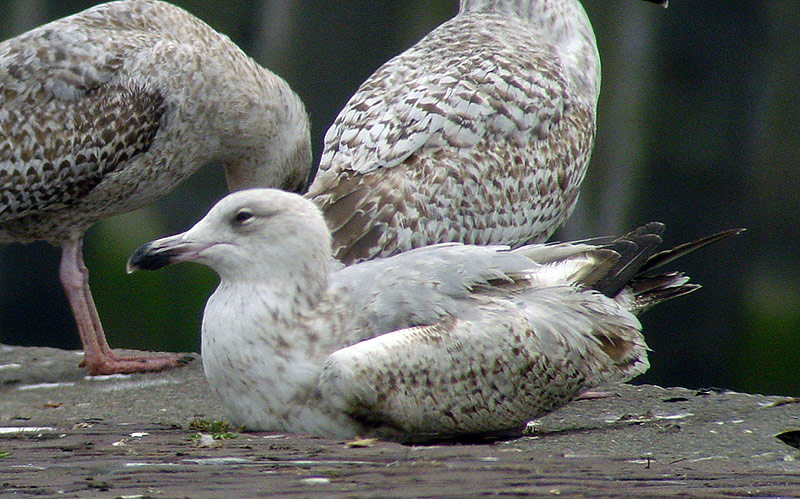 Herring Gull- Zilvermeeuw (argentatus & argenteus)
Herring Gull- Zilvermeeuw (argentatus & argenteus)
(last update:
Herring Gull plumages:
hg 1cy July
hg 1cy August
hg 1cy September
hg 1cy October
hg 1cy November
hg 1cy December
hg 2cy January
hg 2cy February
hg 2cy March
hg 2cy April
hg 2cy May
hg 2cy June
hg 2cy July
hg 2cy August
hg 2cy September
hg 2cy October
hg 2cy November
hg 2cy December
hg 3cy January
hg 3cy February
hg 3cy March
hg 3cy April
hg 3cy May
hg 3cy June
hg 3cy July
hg 3cy August
hg 3cy September
hg 3cy October
hg 3cy November
hg 3cy December
hg sub-ad January
hg sub-ad February
hg sub-ad March
hg sub-ad April
hg sub-ad May
hg sub-ad June
hg sub-ad July
hg sub-ad August
hg sub-ad September
hg sub-ad October
hg sub-ad November
hg sub-ad December
hg ad January
hg ad February
hg ad March
hg ad April
hg ad May
hg ad June
hg ad July
hg ad August
hg ad September
hg ad October
hg ad November
hg ad December
Herring Gull NLA 5.352.700 (argenteus) 2003, 2004 & 2011, 2012, Scheveningen, the Netherlands.
Bird ringed at IJmuiden, 02 July 2001. Still with begging young in Scheveningen harbour on 23 September 2011.
below: NLA 5.352.700 (argenteus) 12cy, March 09 2012, Scheveningen, the Netherlands.
Ringed male, with partner.
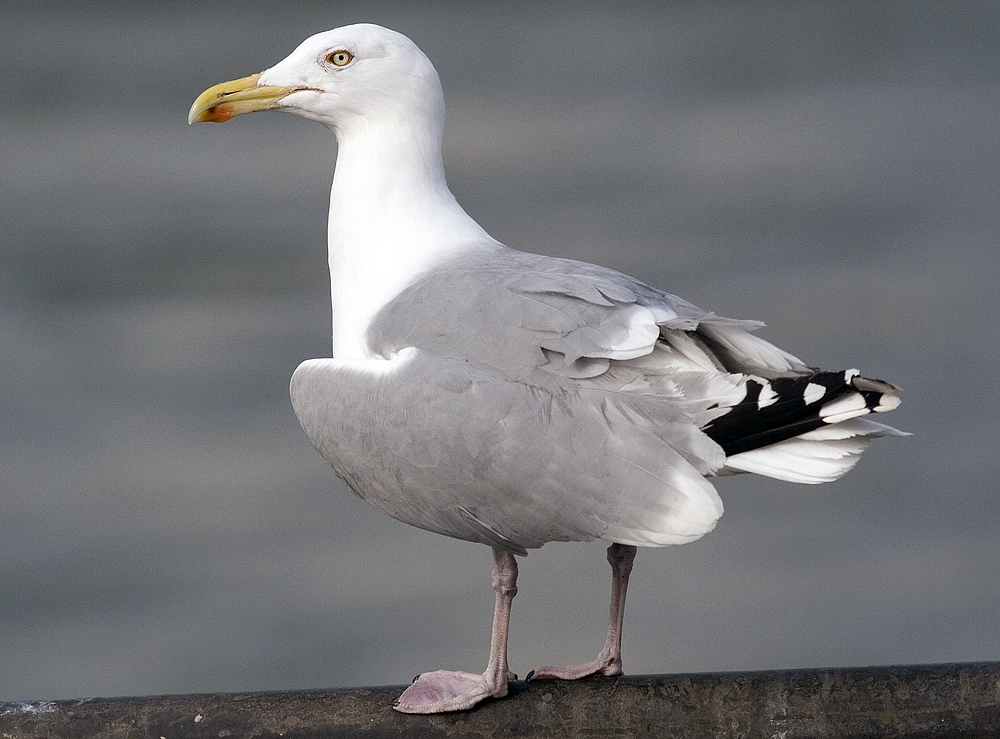
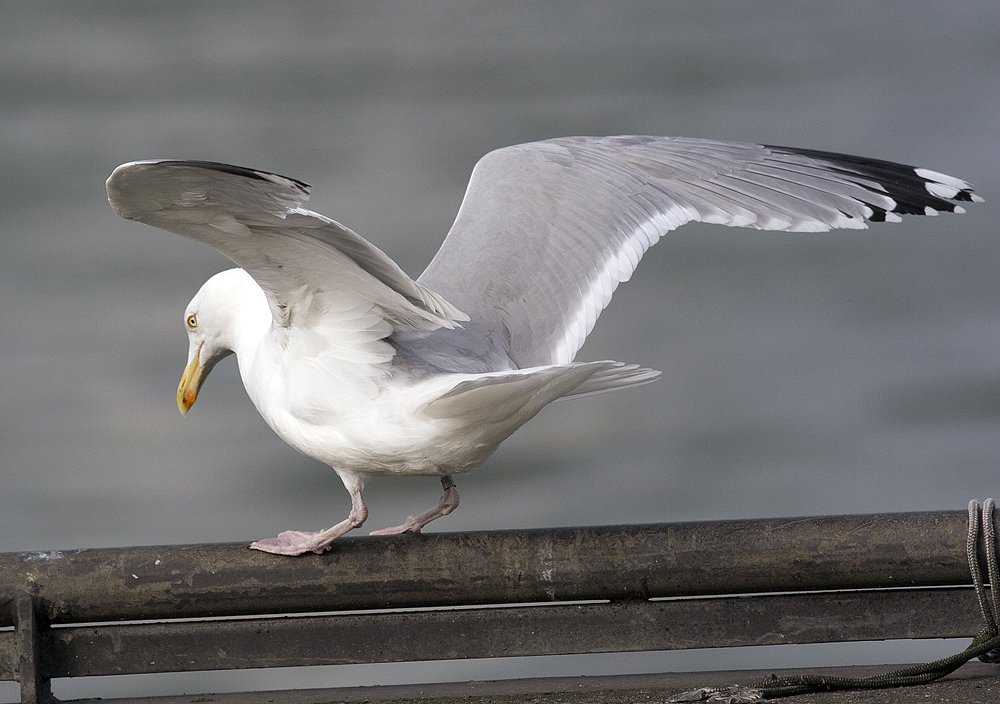


below: NLA 5.352.700 (argenteus) 11cy, September 23 2011, Scheveningen, the Netherlands.
P6 / P9.
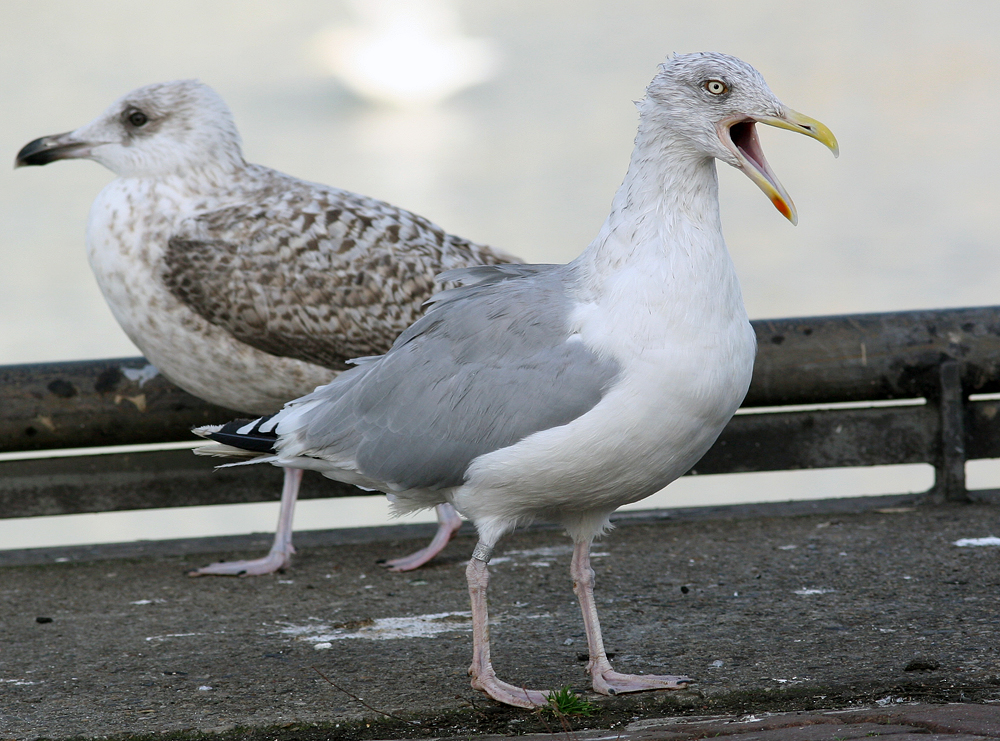

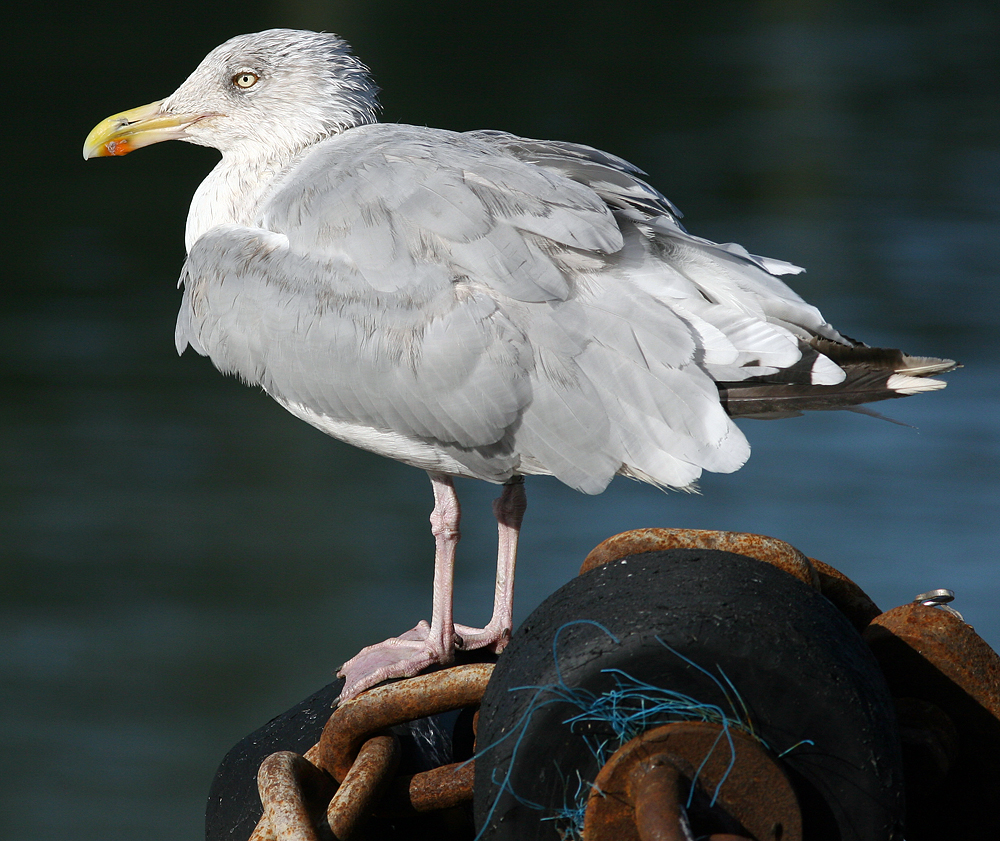
below: NLA 5.352.700 (argenteus) 11cy, November 23 2011, Scheveningen, the Netherlands.
P9 / -.


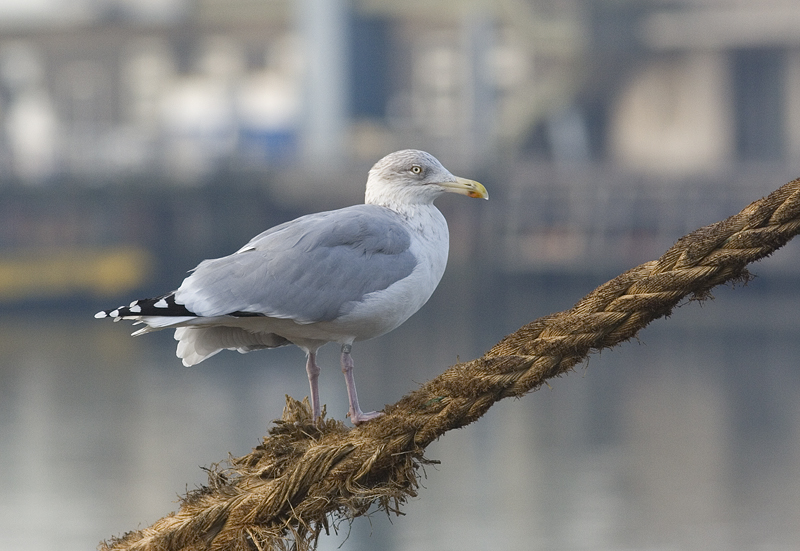
(below 2 images) 5.352.700 4cy, September 21 2004, Scheveningen, the Netherlands.
This 4cy bird resembles an adult argenteus in many respect, but the black markings on the bill are too extensive for full adult birds. Note the pink-based bill and dark orbital ring. The primary moult score: P8 fully grown. See also NLA 5.352.702.

From June (often mid-May in France, Belgium and the Netherlands) to October, a complete moult will bring birds in so-called "sub-adult winter" plumage. A new set of primaries will grow during the summer months and by October, the old primaries are all shed in argenteus in the Netherlands and northern France. In most adults (!), the new primary P6 is just visible beneath the tertials and shows a clear sub-terminal band. By late-September, P6 and P7 are fully-grown as well. At the same time, almost all wing-coverts have been renewed. In summer, the head is still largely white, but by September, most birds develop extensive 'winter streaking', in sub-adults strongly mottled brown contrasting with the white breast as in an executioner's hood. The tertials show obvious white tips. The iris is white-yellow with extensive speckling. The bill has a red gonydeal spot confined to the lower mandible. The orbital ring is yellow-orange in most argenteus, but often dark in autumn.
September primary moult scores in sub-adult & adult Herring Gulls at Scheveningen. |
||||||||||
| . | 30.08.2000 | 01.09.2000 | 01.09.2000 | 05.09.2001 | 07.09.2000 | 18.09.2000 | 21.09.2000 | 21.09.2001 | 26.09.2001 | 30.09.2000 |
| 0 | . | . | . | . | . | . | . | . | . | . |
| 1 | . | 1 | . | 3 | 3 | . | . | . | . | . |
| 2 | 4 | 4 | 9 | 19 | 15 | . | . | . | . | . |
| 3 | 7 | 5 | 41 | 32 | 30 | . | . | . | . | . |
| 4 | . | . | 10 | 4 | . | 7 | . | . | . | . |
| 5 | . | . | 1 | . | . | 35 | 42 | 7 | 24 | 2 |
| 6 | . | . | . | . | . | 36 | 60 | 24 | 62 | 38 |
| 7 | . | . | . | . | . | 11 | 20 | 9 | 12 | 43 |
| 8 | . | . | . | . | . | 2 | 3 | . | . | 1 |
| n: | 11 | 10 | 61 | 58 | 48 | 91 | 125 | 40 | 98 | 84 |
| average | 2,64 | 2,40 | 3,05 | 2,64 | 2,56 | 5,63 | 5,87 | 6,05 | 5,88 | 6,51 |
| Variance (s2) | 0,25 | 0,49 | 0,38 | 0,48 | 0,38 | 0,77 | 0,58 | 0,41 | 0,36 | 0,33 |
| SD (s) | 0,50 | 0,70 | 0,62 | 0,69 | 0,62 | 0,88 | 0,76 | 0,64 | 0,60 | 0,57 |
| SE (sx) | 0,15 | 0,22 | 0,08 | 0,09 | 0,09 | 0,09 | 0,07 | 0,10 | 0,06 | 0,06 |
| Notes: 30.08 - 07.09: number of remaining old primaries sub-ad and adults (thus 1 = P10 still old). 18.09 - 30.09: number of new primaries in adults (hence 6 = P6 full grown). *) By September, local argenteus get company from argentatus from Norway, which have on average lower moult scores and from argentatus from the Baltic region, which have equal moult scores probably. |
||||||||||

below: 5.352.700 (argenteus), 3cy, April 25 2003, Scheveningen, the Netherlands.
3cy argenteus has
a partial moult in spring. It starts in January and is completed by April,
leaving birds in so-called "second summer" plumage. The head
will turn white by June, especially on throat, breast and belly. By April, the
scapulars and mantle will show many adult-like grey feathers, creating a
contrasting "grey saddle" in many birds, as most of the wing-coverts
(especially the lesser coverts) are still barred. The wing-coverts start
to fade and the fringes wear away.
The iris and base of the bill turn pale yellow, although some individuals
still show a warm amber iris. The bill will show some red on the gonydeal angle and an obvious dark bill-band.
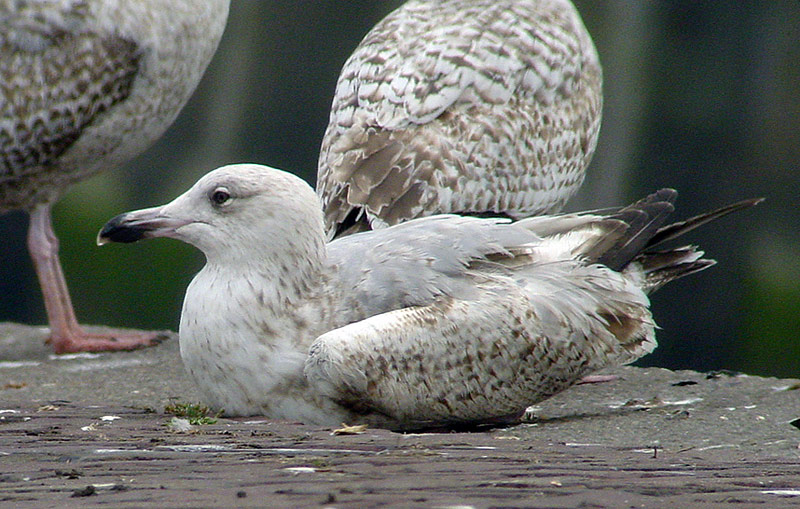
The image presents a typical argenteus,
with an obvious grey saddle. The brown second generation primaries
are bleached and lack a mirror on P10. The second generation tail has a broad dark
tail-band.
This individual has moulted some wing-coverts to third
generation grey feathers in the partial autumn moult as a 2cy bird. It was
ringed as pullus on July 02 2001 at IJmuiden, the Netherlands (52.28N
04.35E).
Research in the 1990's (e.g. H. Vercruijsse) revealed that at least 50% of the Dutch argenteus from SW Netherlands are true migrants, while the other 50% stay within 100 km's of the colony (limited dispersal within the delta of large rivers in the SW of the Netherlands). Migrants follow the coastline south and the majority winter at the coast of Belgium and NW France. Once the wintering grounds are established in the first year, birds are very bound to this particular area, even wintering in the same harbour, using the same resting places and feeding grounds. This habit is found in other species as well (Glaucous Gull, Pontic Gull, etc). Arnhem 5.352.700 was found near the colony in the Netherlands, but have a look at this 3cy argenteus from March: Arnhem 5.352.714, found in NW France.
